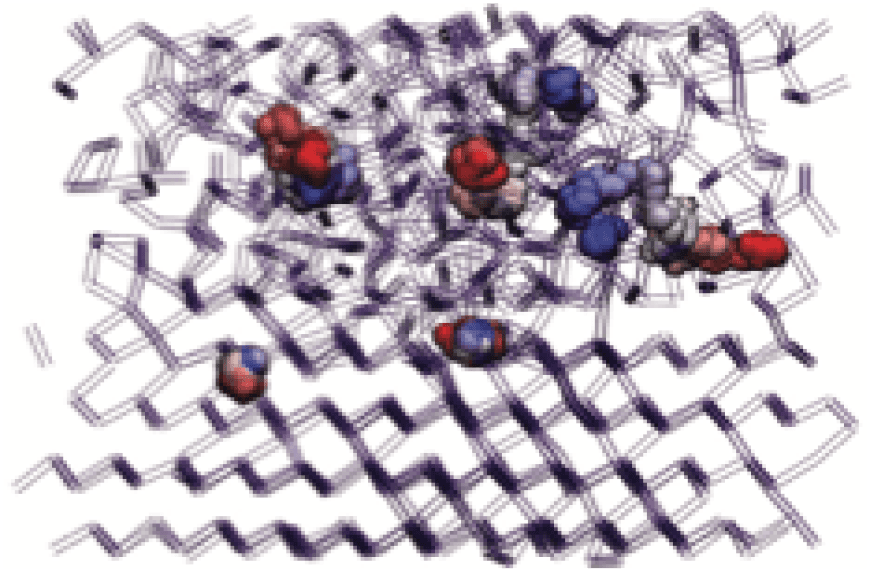
The project considers electronic structure / molecular dynamics calculations for two technologically important classes of applications: materials for the next-generation non-volatile computer memory (random access memory, RAM) and electrochemical catalyst materials (electrodes in fuel cells and electrolysers). The first class involves chalcogenide materials that are used in phase-change memory (PC-RAM) and referred to as phase-change materials (PCMs). These materials can be tuned with external fields (laser heating/excitation, electric current) in a nanosecond timescale resulting in changes in electrical resistance and optical properties. Ag/Cu-doped chalcogenide glasses involve ionic conduction (nanoionics) and formation of nanoscale metal filaments inside a solid electrolyte (amorphous chalcogenide) upon applying voltage. The filaments reduce the resistance of the material significantly changing its “state”, and this phenomenon is the basis of programmable metallization cell (PMC) memory. These memory materials respond in specific, programmed way to external fields, and they have high promise for energy-efficient applications in future computer memory. However, the underlying atomic-scale mechanisms are largely unknown.
Funding source
Academy of Finland
Coordinating organisation
Tampere University
